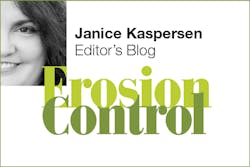
Don Johnson might have led the trend, way back in the ’80s, toward the stubbled look, but the word is taking on a whole different meaning this month. The Department of Agriculture is encouraging farmers to keep the stubble—that is, the cut stalks left in the field after grain such as corn has been harvested—as part of “No-Till November.” The idea is to improve soil health and reduce erosion.
No-till farming has long been promoted as a soil-preserving practice. The USDA’s Natural Resources Conservation Service, which is leading the campaign, notes that leaving the ground undisturbed increases biological activity in the soil, whereas tilling it or baling the corn stalks removes nutrients and also leaves the soil unprotected during the winter. Those who are used to baling the stalks either to sell or to feed their own livestock should carefully weigh the value of the stalks against the potential damage to the soil, NRCS warns.
NRCS is also encouraging the planting of cover crops. The practice had for some time fallen out of favor as many farmers opted to simply add synthetic fertilizers to their fields to increase yield rather than investing time and money in planting cover crops. However, planting off-season crops such as hairy vetch, cereal rye, or Oregon ryegrass has benefits besides trapping nutrients, including preventing soil compaction and enabling farmers to use less water. As an added bonus, fields planted with cover crops provide much-needed habitat (and insects) for migratory birds.
NRCS says its No-Till November campaign is modeled after No-Shave November, a cancer-awareness and fundraising effort.
StormCon 2018 Call for Papers Is Open
StormCon, the conference exclusively for stormwater and surface-water professionals, is seeking abstracts for presentation at StormCon 2018, which will take place in Denver on August 12–16, 2018. The deadline for submitting abstracts is Wednesday, December 6, 2017.
We are accepting abstracts in six conference tracks: Stormwater Infrastructure and Best Management Practices; Green Infrastructure; Stormwater Permit Compliance; Funding, Staffing, and Managing the Stormwater Program; Industrial Stormwater Management; and Research and Testing. For descriptions of the tracks and more information about submitting an abstract, please visit www.StormCon.com.
About the Author
Janice Kaspersen
Janice Kaspersen is the former editor of Erosion Control and Stormwater magazines.